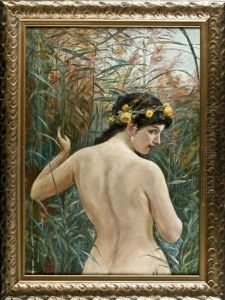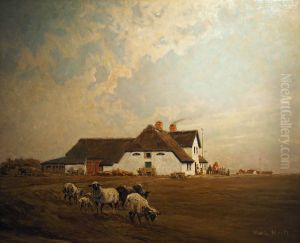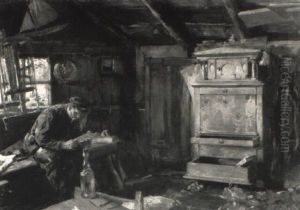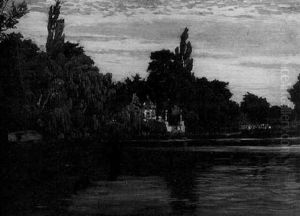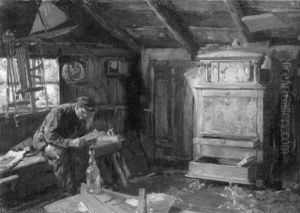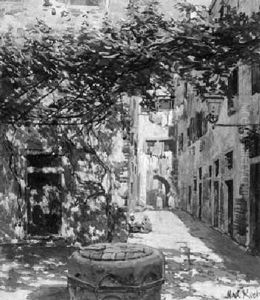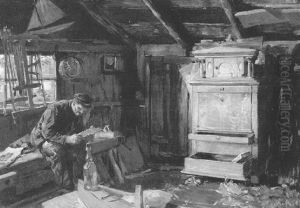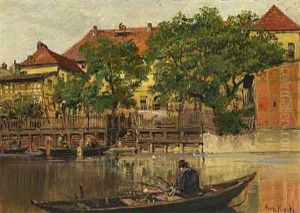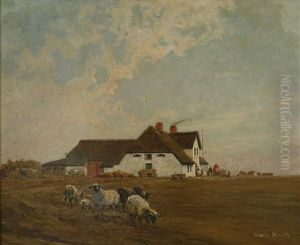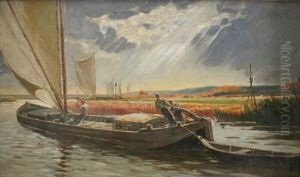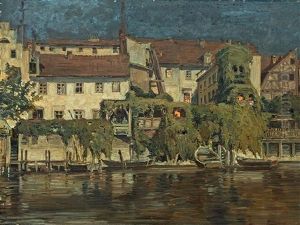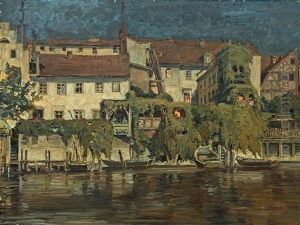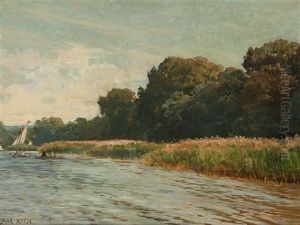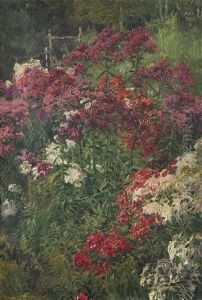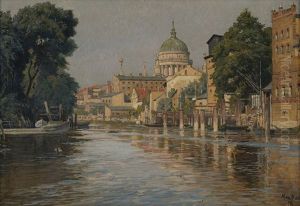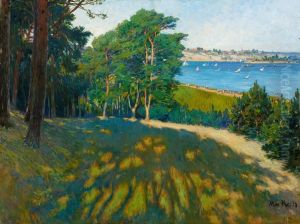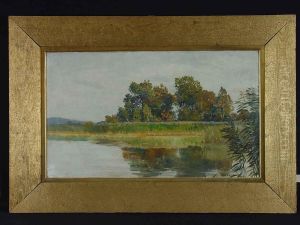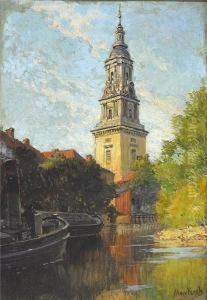Max Friedrich Koch Paintings
Max Friedrich Koch was a German painter and graphic artist known for his contributions to the Art Nouveau movement in Germany, also known as Jugendstil. Born on October 17, 1859, in Leipzig, Germany, Koch demonstrated an early interest in art and pursued his passion through formal education.
Koch studied painting and graphic arts at the Academy of Fine Arts in Leipzig and later moved to Berlin to continue his studies. During his time in Berlin, he was influenced by the burgeoning Art Nouveau movement, which emphasized organic shapes, flowing lines, and often incorporated floral and other natural motifs. He became particularly well-known for his decorative and mural work, which often featured these characteristics.
In his professional career, Koch worked on various important projects, including designing murals and other decorative elements for public buildings, such as theaters and museums. He was also a prolific illustrator, contributing to magazines and books with his distinctive style. His work was characterized by a harmonious blend of natural forms and stylized figures, and he was skilled in using color and composition to create striking visual narratives.
Aside from his artistic contributions, Koch was involved in art education. He taught as a professor at the Royal School of Art in Berlin, where he influenced a generation of young artists. Throughout his life, Koch remained active in the artistic community, participating in exhibitions and taking on significant commissions.
Max Friedrich Koch's legacy lives on through his contributions to Art Nouveau, and his works can be found in various collections and museums. He passed away on April 7, 1930, in Berlin, but his influence on the development of modern art and design in Germany continues to be recognized and appreciated. His ability to fuse the decorative with the functional made him a significant figure in the transition from traditional to modern art forms.
